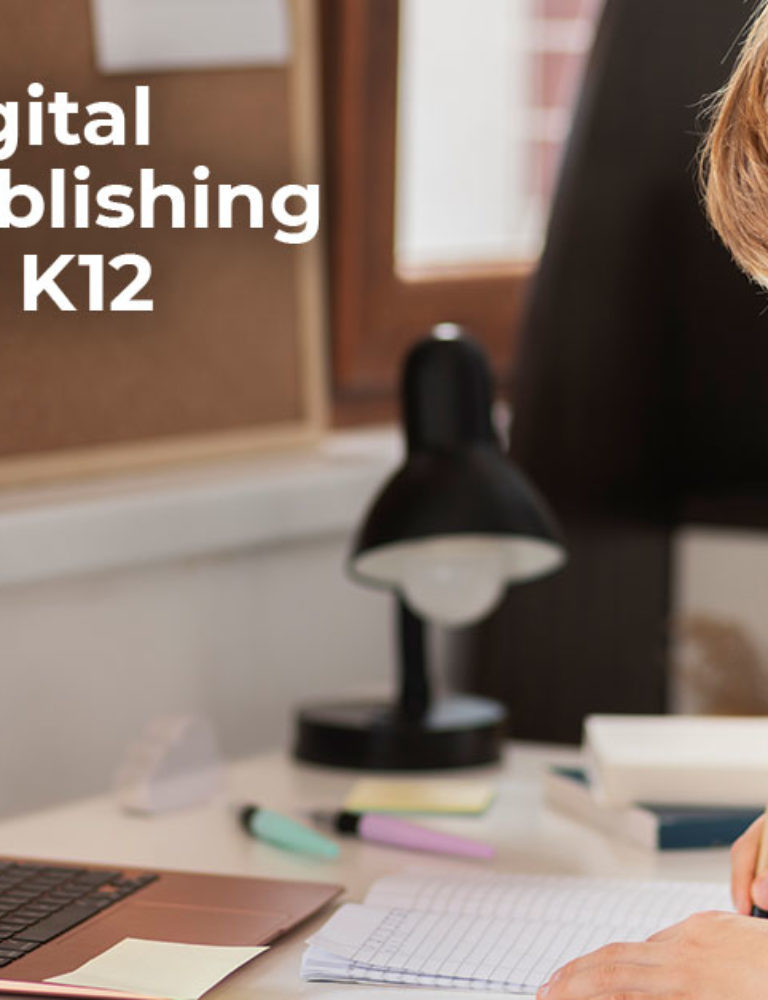In this age of digitization, where everything from shopping to banking is available at the click of a button, why not access study materials online? eBooks or eTextbooks are not a new concept anymore.
Kindle has ensured that the whole world has access to digital books. The change in reading habits or rather adoption of reading platforms, compelled traditional educational publishers to move into the digital space. As a result, K12 students have hugely benefited. This is because digital reading makes it convenient for them to study anytime and anywhere.
A survey conducted among 73 engineering students in South Africa indicated that digital textbooks were making tertiary education more inclusive. This is because the use of videos and other interactive multimedia in the content offered a less passive experience.
But now, rather than a convenience, it has become a necessity for students to access textbooks and educational resources on digital platforms. The reason – expensive physical textbooks.
Print textbooks cost way more than eTextbooks and students, who are already on a limited budget, find it extremely difficult to buy their yearly learning materials. In this situation, moving to digital textbooks is the only viable, affordable option.
Earlier We Had Posted: Will eBooks Replace Physical Textbooks in Higher Education
Table of Contents:
Why Are Traditional Print Textbooks Costly?
Think about the production process. How many hours of physical and mechanical labor do you think it takes to print one textbook? Let us consider all the factors which contribute towards the making of a printed book.
Let’s start with the basics: cutting down trees. Once they are felled, they are transported to a paper mill, where there’s a wide array of processes, including pulping, heating, drying, pressing, and the starching process, which makes printable paper. Industry experts indicate that while using chemical pulping to produce 1 ton of printing paper approximately 24 trees are required.
Now let’s look at textbook publishing process:
- The manuscript is given for copy editing. It is assessed to ensure all required elements are present.
- After reviewing the final manuscript, it goes into the design stage. The copy goes for typesetting, where the text is placed into a layout. The font style, font size, color, etc., are chosen at this stage.
- The illustrations and cover art for the book are designed.
- Post this, a sample book is printed out and sent out for final proof check to the author and editor. Any final changes in the text, layout or images must be made now.
- Once the reviewed copy is received, the index is created, front and back cover details, affiliations and author details are all created and is once again given to the author and editor for review.
- After the final review, the copy is then given for printing.
- Once published, the books are shipped to the publisher’s warehouse and then they are transported to other brick and mortar stores for consumers to buy.
This entire process takes months and months of manual effort. So, from wood to paper and from manuscript to finished book; all the man-hours and effort are somewhere included in the final price of a textbook.
On the other hand, digital textbook publishing platforms such as KITABOO help digitize the entire creation, publishing, and distribution workflow of eTextbooks, making the process secure, seamless, and cost-effective.
Why Are eTextbooks Cheaper?
Creating an eTextbook is comparatively simple and easier. No paper, no printing. All you need is a computer. Using an eBook creation software, one can easily create digital textbooks with way more features and functionalities than a regular textbook.
K12 students don’t just flip pages anymore, they get to interact and engage with the content. The minimal production process is one reason why eTextbooks are cheaper than print textbooks. It also helps that educational publishers have found a way to offer these eBooks at an even lower, more affordable price by offering them on a subscription-based model.
Also Read: How to Create an Interactive eBook (Guide)
Related: 8 Best eBook Creation Software
What Is An eTextbook Subscription-Based Model?
Subscription-based business models have grown in popularity among consumers over the last few years, from OTT platforms and eCommerce platforms to education-focused platforms.
An eTextbook subscription-based model is a service where students can get access to an online library of digital textbooks, and education-focused eBooks. Rather than purchasing individual eTextbooks, they can purchase a collection, as per their specific needs.
They have the option of subscribing monthly, bi-annually, annually, and so on, and will encounter a recurring fee, accordingly. They can choose a specific combination of eBooks. They can also renew or discontinue the service, as per their evolving real-time needs. The flexibility and affordability aspects of subscription services are what appeals to students.
A fine example would be Cengage, who launched their Cengage unlimited subscription pack, where students get unlimited access to their entire library of online textbooks for a fixed fee based on duration. This allowed students to access study materials at less than half the price of print textbooks!
Subscription-based and rental services have opened a new window of possibility for both educational publishers as well as students.
The business cast is extremely bright. The worldwide eTextbook rental market, pegged at $ 391 million in 2022, is estimated to grow to $2035.48 million by 2031. Hence, educational brands who make early investments in state-of-the-art digital publishing software can create high-quality digital textbooks and gain a headstart in cornering the market.
How Does the Digital Textbooks Subscription Model Work?
A survey conducted among 318 leaders of subscription-based businesses indicated that customer retention has emerged as the top-most priority for 87% of the surveyed businesses. This is due to the opportunity to cut customer acquisition costs.
A subscription model focuses on customer retention rather than customer acquisition. In this model, the company sells a product or service on a monthly or yearly basis, and in the process, they retain the customer as they pay for prolonged access to the content. This guarantees sales over a 6 or 12 month period rather than a single purchase.
Here’s an example of a successful subscription business model:. Spotify, one of the leading music streaming platforms, introduced a freemium model, where users could have free access to their entire audio library, with some restrictions on downloading but otherwise a great option.
Upgrading to a paid model, Spotify banked that users will prefer paying a nominal fee over piracy if the offering and user experience were excellent. Their gamble paid off by the end of 2018, Spotify had 200 million monthly active users, with over 90 million paid subscribers. As of the fourth quarter of 2023, Spotify had reached 602 million monthly active users worldwide, marking a rise of over 110 million users within the span of a year.
Even Netflix, the streaming giant, grew rapidly by leveraging a subscription-based business model and a smart content strategy. Today it has around 296.6 million paid subscribers. This tells us that educational publishers, too, can aim to design compelling and relevant course materials and offer a subscription package to increase their sales revenue.
To summarize, the benefits of an eTextbook subscription service are as follows:
- Students have to pay only for the period during which they need the textbook.
- Digital textbooks are more affordable than printed textbooks.
- Students also now have the option to browse through thousands of eBook titles. Some publishers even allow them to pick and choose specific titles from different collections and create customized course material.
Additional advantages of eTextbooks include:
- They do not consume physical space, nor do they need to be saved on devices. They are stored on the cloud.
- Physical books are heavy and cumbersome to transport. Digital textbooks on the other hand face no such issues.
- Students can access study material anytime, from anywhere.
- eTextbooks can also be accessed offline, in remote areas with poor connectivity.
- The content is easily shareable and K12 learners and educators can enjoy a collaborative learning experience.
- Online textbooks are becoming increasingly interactive, thus offering highly engaging experiences to learners.
By leveraging cutting-edge digital textbook platforms such as KITABOO, publishers can embed relevant videos, audio, widgets, hyperlinks, augmented reality and more into their content.
Key Takeaway
A subscription model is like an all-you-can eat service where students can enjoy unlimited content for a flat fee. Students, who require multiple learning resources can greatly benefit from a subscription-based eTextbook service.
A lot of platforms that offer eBook subscription services allow users to try out their service before subscribing, and these eBooks can be accessed on multiple devices and operating systems, such as Android, Windows, and iOS.
Paying periodic subscription fees to rent a collection of books is definitely more cost-effective than paying a higher sum for single-use books. This has improved the affordability of digital textbooks, making them cheaper than their print counterparts.
If you’re an educational publisher looking to create, publish, and distribute high-quality content and build a subscription-based model, consider partnering with KITABOO to turn your vision into reality.
Reach out to us to start a conversation now!
Download the white paper to learn more about how US higher education publishers can make use of a subscription model.
Discover How An Ebook Conversion, Publishing & Distribution Platform Can Help You
Kitaboo is a cloud-based content platform to create-publish & securely distribute interactive mobile-ready ebooks.
You May Also Like
-
How KITABOO Helps Create Stunning Rich Media Resources
Blog,Digital Publishing,eBook solution / February 21, 2024








